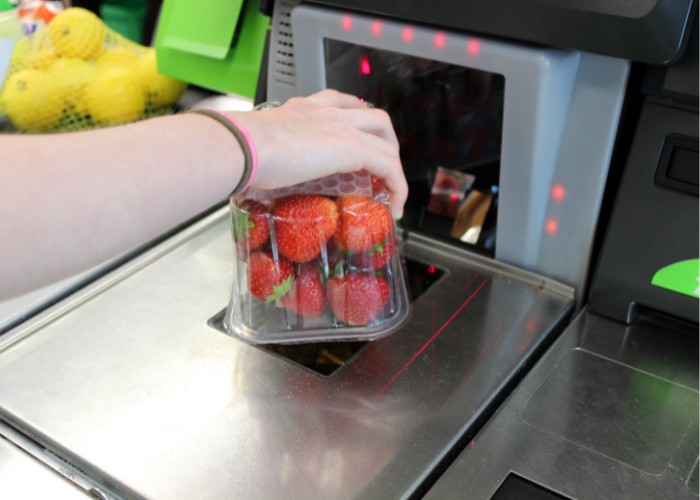Self-checkout machines have become a ubiquitous feature in various retail locations in the United States, from cafés to airports and stadiums. While self-checkout kiosks offer a convenient way to skip the line and pay for your purchases quickly, many shoppers are increasingly uncomfortable with the prompt to tip service workers, particularly when there is no interaction with employees.
Business owners claim that tipping at self-checkout kiosks helps to boost staff pay. Wait, WHAT? Now we gotta give tip to the self-checkout machines?! I can’t believe what we’re saying here but, apparently, that’s a thing happening right now in America. Sounds quite absurd but some retailers are asking costumes to leave a tip to the computer. Let’s explain that to see if it makes sense.
Customers are questioning where exactly their self-checkout tips are going to
Some shoppers argue that self-checkout machines are a way for companies to cut labor costs, leaving customers to shoulder the burden of employee pay. However, companies argue that tipping is optional and a way to thank workers for doing a good job. Experts and labor advocates disagree, contending that tipping prompts at self-checkout kiosks are a deceptive business tactic that puts the burden of employee pay on the customer instead of raising wages.

According to Ishita Jamar, a senior at American University in Washington, DC, self-checkout machines are reducing labor costs, which translates in people being left unemployed. She argues that tipping at self-checkout machines is therefore illogical, as customers are paying more while the company saves on labor costs. Customers are also questioning where their tips are going, given that there is no interaction with employees.
Are you actually helping the stores’ employees by tipping at the self-checkout machine?
Labor advocates have raised concerns that self-checkout kiosks with tipping prompts are a way for companies to shift labor costs onto customers. By asking customers to tip service workers, companies can pay lower wages and avoid responsibility for employee pay. This practice is particularly concerning in light of the low minimum wage in many states, which means that some workers rely on tips to earn a living wage.
Companies that operate self-checkout kiosks argue that tipping is optional and a way to thank workers for doing a good job. However, experts and labor advocates contend that tipping at self-checkout kiosks is a deceptive business tactic that puts the burden of employee pay on the customer instead of raising wages. William Michael Lynn, a professor at Cornell University’s Nolan School of Hotel Administration, said that businesses “are taking advantage of an opportunity.” He noted that companies benefit from extra revenue with very little cost, as customers are effectively subsidizing labor costs by tipping.
The tipping prompt at self-checkout kiosks is also concerning for customers, especially at airports where prices are higher than usual. Some shoppers find it unbearable that they are asked to tip when there is no interaction with employees, leaving them to question where their tips are going.
Companies are shifting labor costs onto customers in various ways, as seen in the context provided.
Labor costs account for more than 60% of corporate expenses, and it is only getting more expensive. As the economy rebounds and puts people back to work, the labor market has become much tighter, and wage growth has increased. Companies are being forced to raise pay to recruit and retain talent, and as the business cycle proceeds, wage growth will eat into profit margins in a big way. This means that companies may have to pass on the increased labor costs to customers in the form of higher prices for goods and services.
Restaurants and businesses are tired of waiting for workers and are increasingly turning to automation instead. Hiring issues have been widespread in the restaurant industry for several months, with major firms struggling to contend with the national labor shortage. Many of them have begun turning to technology as a replacement for low-wage workers. For instance, Cracker Barrel rolled out a mobile app that lets customers pay for meals; McDonald’s started testing automated drive-thru ordering at 10 Chicago locations; and Dave & Buster’s plans to expand its contactless ordering. The shift to automation has been underway for months now, with productivity surging 5.4% in the first three months of 2021, its fastest rate of improvement in more than 20 years. This jump came as businesses had just started rehiring, suggesting the increase had more to do with the continued use of pandemic-era tech. However, the downside of automation is that it can lead to job loss, which may result in a decrease in consumer spending and ultimately hurt businesses in the long run.
As a general rule, the more education and skills required to perform a job, the higher the labor cost will be. Companies that must hire employees who are highly literate and have specialized skill sets will find their labor costs are higher than organizations that can quickly train employees to do simple and repetitive tasks. Workers who have unusual combinations of skills can often command the highest wages. In some cases, companies may choose to outsource certain tasks to countries where labor is cheaper, which may help reduce labor costs. However, outsourcing may also result in quality control issues, communication barriers, and cultural differences.